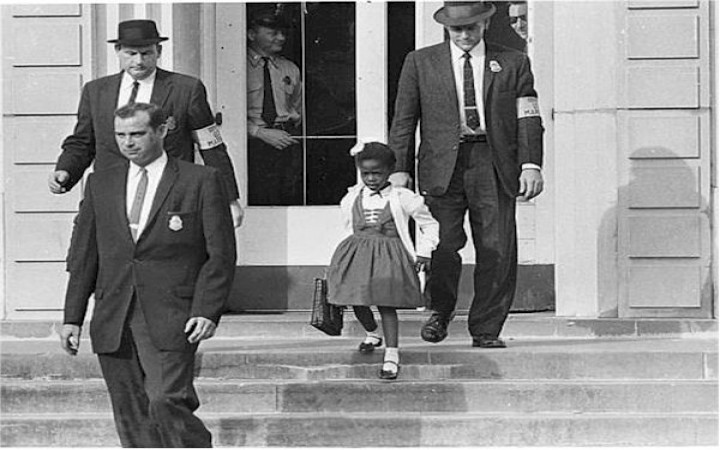Today’s Wonder of the Day was inspired by isabel. isabel Wonders, “Who is Ruby Bridges?” Thanks for WONDERing with us, isabel!
What’s your typical day at school like? Many kids get to school and are happy to see their friends and teachers. Others might complain that school is a lot of work and look forward to recess. It’s true, school can be hard! Still, kids get to learn new things and meet new people at school. It’s a place where they learn about new ideas and meet people from many different backgrounds.
School wasn’t always like that. Because of segregation, children of different races used to attend different schools. Kids only went to school with others who looked like them and shared similar backgrounds. This went on for many years.
Segregation meant that children didn’t have equal access to education. Schools for Black children often received less funding from the government. They had less money to buy supplies, pay teachers, and repair school buildings. Segregated schools also made it much harder for people to meet those of other races or from different backgrounds. This made it difficult for many people to connect to others who were different from them.
In 1954, the United States Supreme Court outlawed segregation. They said that children of all races should be able to go to school together. Many White people were angry about this. In the South, several states continued to segregate children.
In 1960, Louisiana schools were still segregated. When they were told they had to change, they started to do so slowly. In fact, desegregation in Louisiana started with only one student. Her name was Ruby Bridges.
Ruby signed up to attend Frantz School, five blocks from her home. That was much closer than her former school, but Frantz was formerly an all-White school. Ruby's father wasn’t sure she should go. He didn’t want his daughter at the center of a heated political issue. However, Ruby’s mother believed Ruby would get a better education at the new school. Finally, they decided that Ruby would go to Frantz School.
On November 14, 1960, Ruby and her mother arrived at the new school in a car driven by federal marshals. The marshals were there because they knew many White Southerners would show up to try to stop Ruby. They were right. A huge, angry crowd had gathered by the time they arrived at Frantz School. The marshals escorted Ruby into the school.
That day, Ruby made history. She was the first Black child to enter a formerly all-White school in Louisiana. But once inside, Ruby spent the entire day in the principal’s office. Was she in trouble? No, of course not! The principal kept Ruby in his office to protect her from angry White parents. They came to the school throughout the day to take their children home.
The next day, Ruby met her teacher, Barbara Henry. Ruby was the only student in her class. That’s because the White students’ parents didn’t want her in the same class as their children. Ruby and Ms. Henry sat side-by-side that entire first year as Ruby worked on her lessons.
As the school year wore on, the angry crowds outside the school grew smaller. At the beginning of the next school year, more Black students attended Frantz School. The new students began to make friends but were also treated poorly by some of the White students. It was a long time before people started to accept the change.
Years later, Bridges founded the Ruby Bridges Foundation. Its goal is to build tolerance, respect, and appreciation of differences. In 2000, Bridges became an honorary deputy marshal. Today, she lives in New Orleans with her husband and children.
Standards: C3.D2.Civ.2, C3.D2.Civ.8, C3.D2.Civ.10, C3.D2.Civ.13, C3.D2.His.3, C3.D2.Civ.14, CCRA.L.3, CCRA.L.6, CCRA.R.1, CCRA.R.2, CCRA.R.10, CCRA.W.2, CCRA.L.1, CCRA.L.2, CCRA.W.2, CCRA.W.7, CCRA.W.9, CCRA.SL.1, CCRA.SL.2




